We often think of Sagittarius as home to only one galaxy — the Milky Way. But two members of the Local Group and a smattering of fainter galaxies reside here, too.
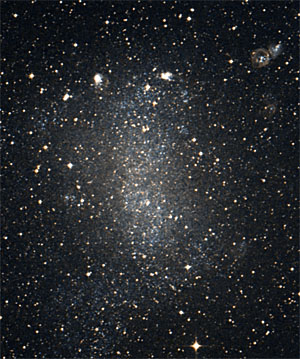
DSS2 / STScI / NASA / Aladin Sky Atlas
When it comes to observing galaxies, Sagittarius seems an unlikely place to go galaxy-hunting. Much of the constellation overflows with our own Milky Way and its ubiquitous dust clouds that blot more distant galaxies from view. And yet nature provides.
Browsing the interstellarum Deep Sky Atlas recently, I stumbled across dozens of faint MCG and ESO galaxies in the southern and western realm of the Archer. We'll leave those for another day and instead begin our unlikely extragalactic journey to four brighter targets: NGC 6822, NGC 6835, NGC 6836, and the Sagittarius Dwarf Elliptical Galaxy (Sag DEG).
To be fair, Sag DEG (not to be confused with Sag DIG, a dwarf irregular galaxy) isn't directly visible in a telescope. Despite an overall magnitude of 4.5 and apparent diameter of 7.5°, it's 70,000 light-years distant, located on the far side of the our galaxy's core, and impossibly faint. Much of the dwarf is superimposed on the Milky Way's own star clouds and difficult to tease out even for the pros. But this 10,000-light-year-wide stellar blob possesses four globular clusters, the brightest of which is M54, easily visible at 8th magnitude in a small telescope. M54 resides near Sag DEG's center and may even have been its former core. We'll treat it as a stand-in for the galaxy itself.
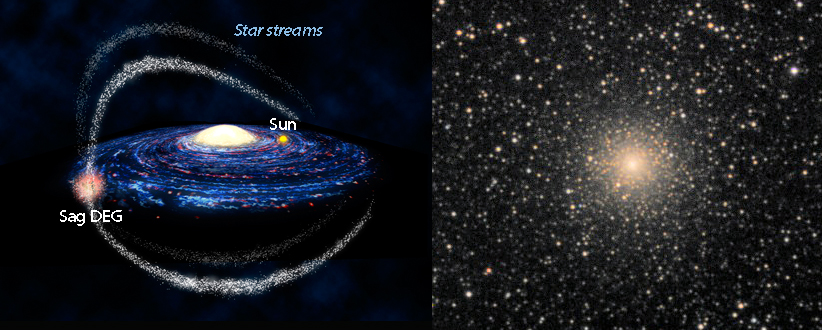
Amanda Smith (Institute of Astronomy, University of Cambridge) (left); Jim Misti (right)
M54 is a dense ball of stars 12′ (arcminutes) across located 1¾° southwest of 3rd-magnitude Zeta (ζ) Sagittarii. It's the first and possibly only globular cluster reassigned to a different galaxy after more than two centuries of citizenship in the Milky Way. Charles Messier first spotted and cataloged the cluster in 1778. In my 15-inch telescope at 64× it looks small due to extinction, but its star-like core blazes brightly. Even though M54 only climbs to 13° from my latitude, once I cranked the magnification to 245×, I saw a beautiful mist of faint, barely resolved stars in the cluster's halo along with two brighter outliers — a ~13.5-magnitude star southeast of the core and a 14th-magnitude star due west. Many of M54's stars shine around magnitude 15.
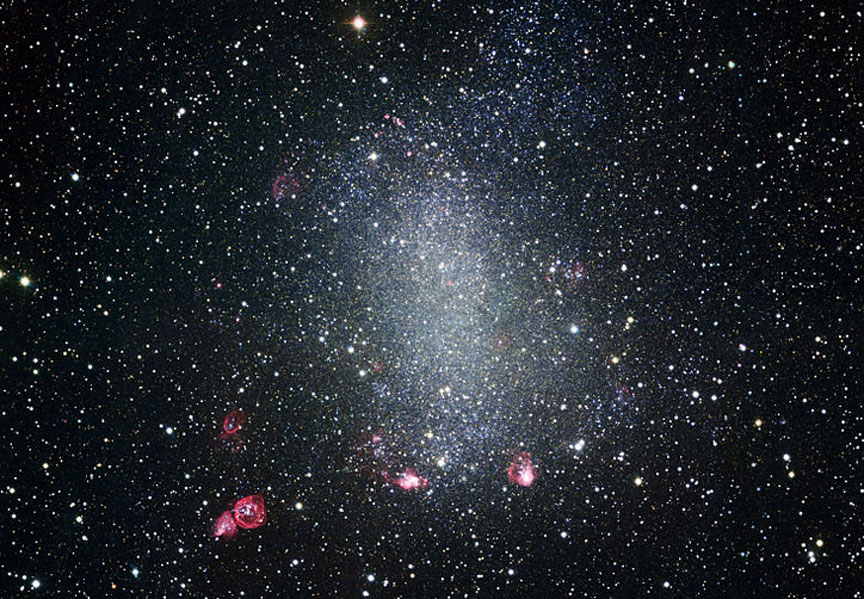
ESO
If we now slide two fists to the northwest of the Teapot's handle we arrive at NGC 6822, a barred irregular galaxy 1.6 million light-years away. Its large size —15.5′ × 13.5′ — and low surface brightness can make it tricky to find. Some observers have seen it in apertures as small as 4 inches. The key is to use low magnification with a wide enough field of view to contrast the ghostly galaxy against a dark sky. Narrow the field too much and you might completely miss it.
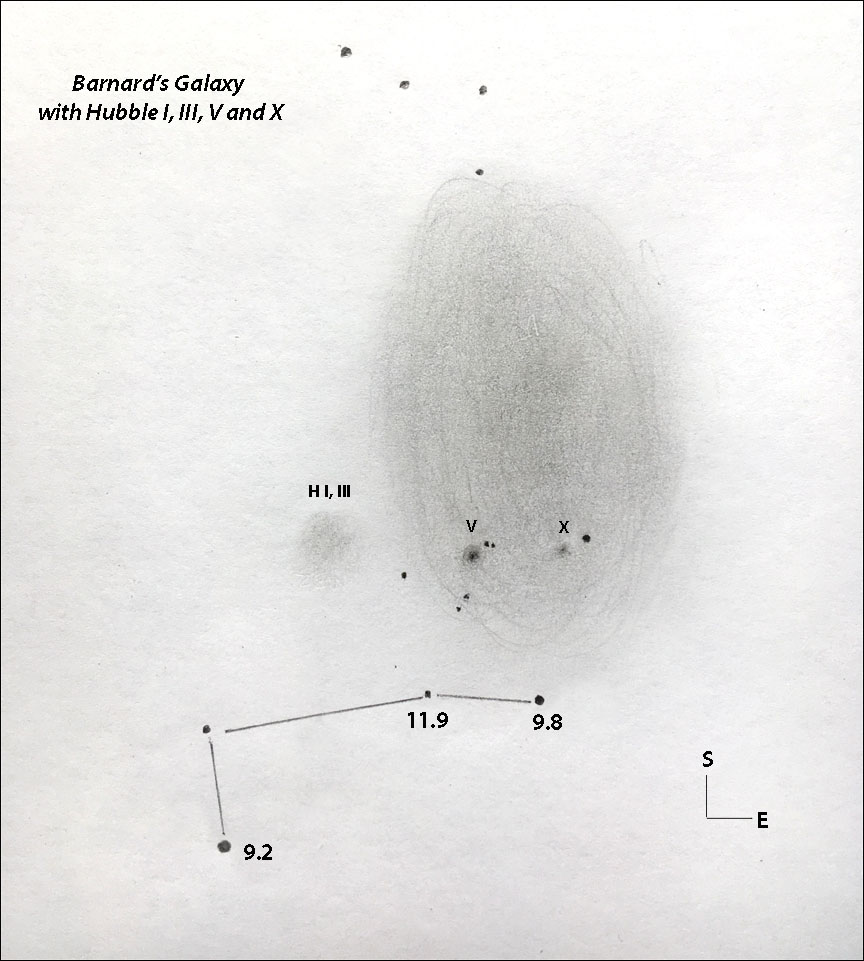
Bob King
At 64× (1° field of view) in the 15-inch I could easily make out a large, elongated, amorphous glow like breath on a mirror. Several bright field stars studded the galaxy's southern border. If you have any difficulty making out the diffuse patch, roll your eyeball around the field of view to exercise averted vision to the max. Doing this, I noted that the broad, north–south oriented core of the object appeared slightly brighter than its edges.
Once you've identified the hub of Barnard's Galaxy screw on a nebula filter — a UHC, O III, or equivalent — and seek the star-popping H II regions first noted by Edwin Hubble that dot its northern halo. Hubble discovered five star-forming regions in the galaxy; today we know of more than 150. The westernmost patch, a pair of side-by-side nebulae dubbed Hubble I and III, are faintest at ~14 magnitude and 1.5′ across. The duo appeared as a single, misty patch with averted vision aided by an O III filter.
Hubble V is the brightest and visible both with and without the filter as a 30″ (arcsecond) fuzzball with a compact, star-like condensation at its center. The easternmost blob, Hubble X, is fainter, smaller (~20″) and more diffuse with a slight brightening in the core. Like Hubble V, it's also visible without a nebular filter. Both strongly resemble faint planetary nebulae.
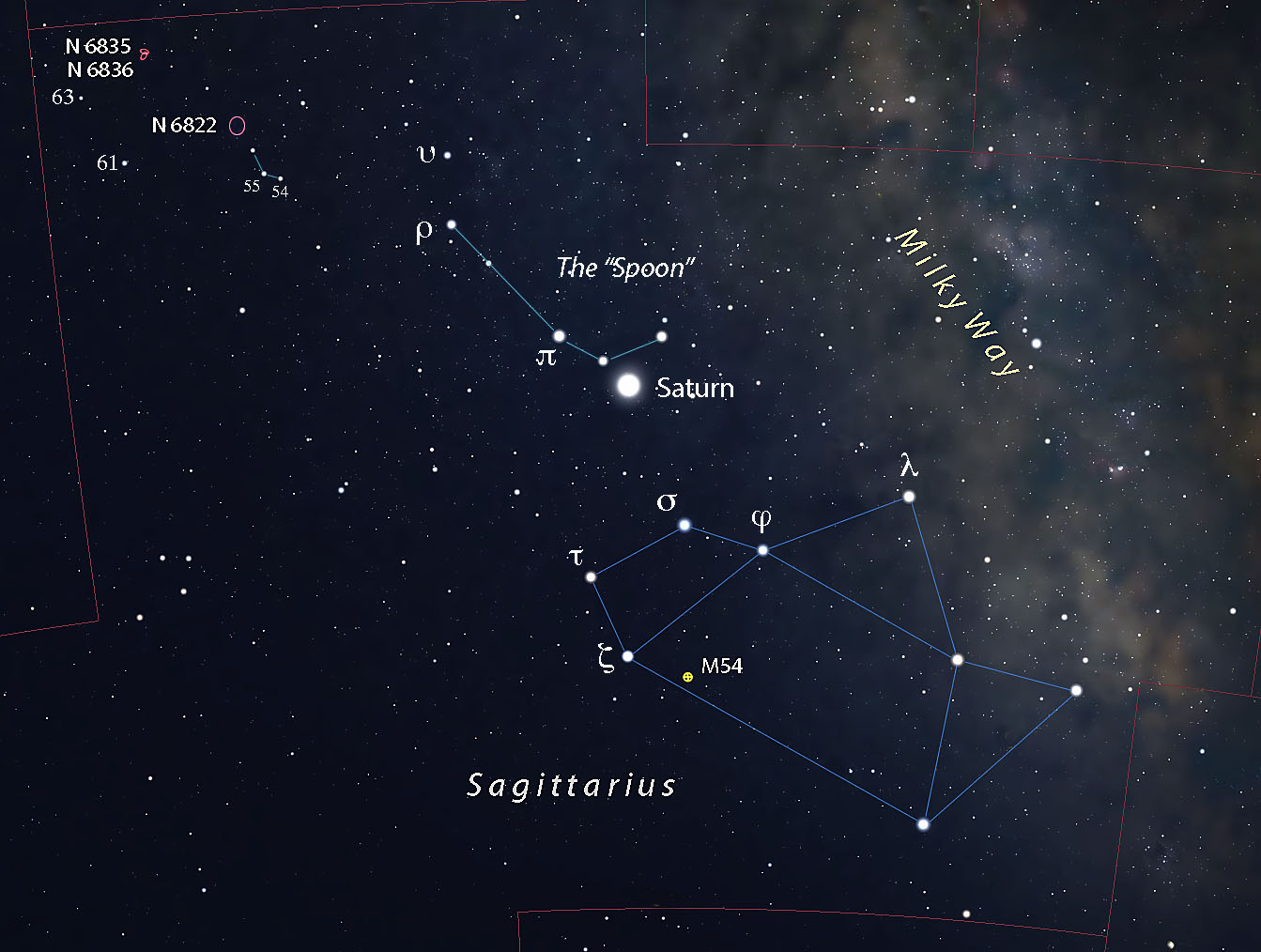
Stellarium
Barnard's Galaxy is 1.6 million light-years away and resembles the Small Magellanic Cloud in both form and composition. Edwin Hubble studied the galaxy with the 100-inch Hale reflector in the early 1920s and published a paper titled "N.G.C. 6822, A Remote Stellar System," which included observations of 11 Cepheid variables. Using Henrietta Leavitt's period–luminosity relationship, he determined the distance to NGC 6822 at 700,000 light-years, more than double Harlow Shapley's estimate. Hubble's observation was an early nail in the coffin of the more constricted universe favored by Shapley and his followers at the time.
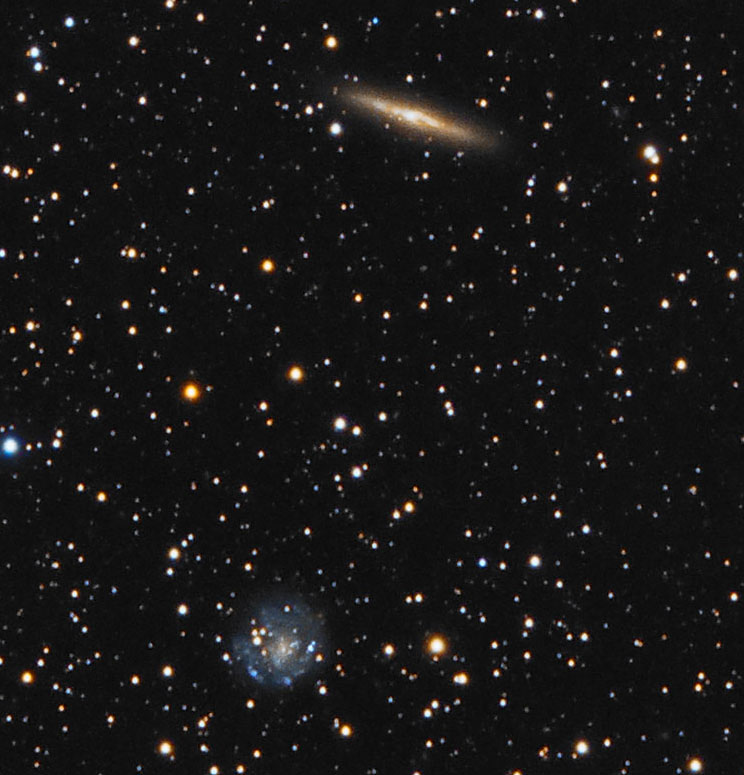
Rick Johnson / CC BY-NC-ND 4.0
Moving to the northwest corner of Sagittarius, I sought out a pair of faint NGC galaxies, NGC 6835 and NGC 6836. Although it was faint at magnitude 12.5, I fairly quickly spotted the edge-on spiral NGC 6835. The brighter core bled into narrower arms that extended to the east and west. The view was much better at 142× and 245×. NGC 6536, located in the same 142× field of view 7′ due south, glowed wanly at magnitude 12.9. It was much more diffuse object that required averted vision to see. I saw a round haze with a faint foreground star involved 142×. With effort I copped a pleasing view of both galaxies at the same time.
It's a joy to spend time in Sagittarius with all the wonderful, bright deep-sky objects the Milky Way provides. But if you need to leave the galaxy for a taste of the exotic, you can do that, too.
 5
5
Comments
Jamie-Dillon
August 21, 2019 at 6:48 pm
Along with M52 likely being the core of SagDEG, there are 3 other globulars that are thought to be remnants of that galaxy - Arp 2, Terzan 7 and 8. I've seen Arp 2 and Terzan 7, both took work in my 16" at Chew's Ridge, very dark southward-looking spot in the Ventana Wilderness in central California. Brent Archinal in Star Clusters gets excited about these remnants.
You must be logged in to post a comment.
Bob KingPost Author
August 22, 2019 at 12:17 am
Hi Jamie,
That is correct. All are difficult as you mention but worth the workout with larger telescopes. I've seen one of the Terzans but not Arp 2.
You must be logged in to post a comment.
Jamie-Dillon
August 23, 2019 at 11:30 pm
Hey Bob. Yeah, Arp 2 won't jump out in any instrument nor a photo. Took patience that one night at Chew's Ridge with a limiting magnitude of 6.2, seeing good at 4/5. Saw a "glimmer behind 4 stars. I went away twice, came back, still there. Sketched it."
You must be logged in to post a comment.
Tom-Reiland
August 25, 2019 at 4:47 am
I finally was able to enjoy a clear night at Wagman Observatory. It is about 20 miles NE of Pittsburgh. Other smaller cities add glow to the South. Even with the local light pollution, I could see the Milky Way down into Sagittarius. I have observed NGC 6822 many times. Several years ago, from a darker location, I viewed the galaxies NGC 6835 and 6836. I was able to see all three last night. While is was in the neighborhood, I couldn't pass up checking out one of the brightest PNs, NGC 6822. It definitely looks like Uranus at moderate magnification. I also made my annual observation of Pluto, though it was not easy. The S & T chart for hunting Pluto was excellent. It's too bad the clearing couldn't wait one more night. I've found that the best night of the week to observe is Sunday because of less lights since many businesses are shut down. I look forward to clear, New Moon, Sunday nights in September and October when the leaves are still on the trees to block what lights are still on and the air is usually drier. Thanks again for another observing challenge, Bob!
You must be logged in to post a comment.
Tom-Reiland
August 26, 2019 at 4:13 pm
That should be 6818 and not 6822. It was a long night at the observatory. Still recovering.
You must be logged in to post a comment.
You must be logged in to post a comment.